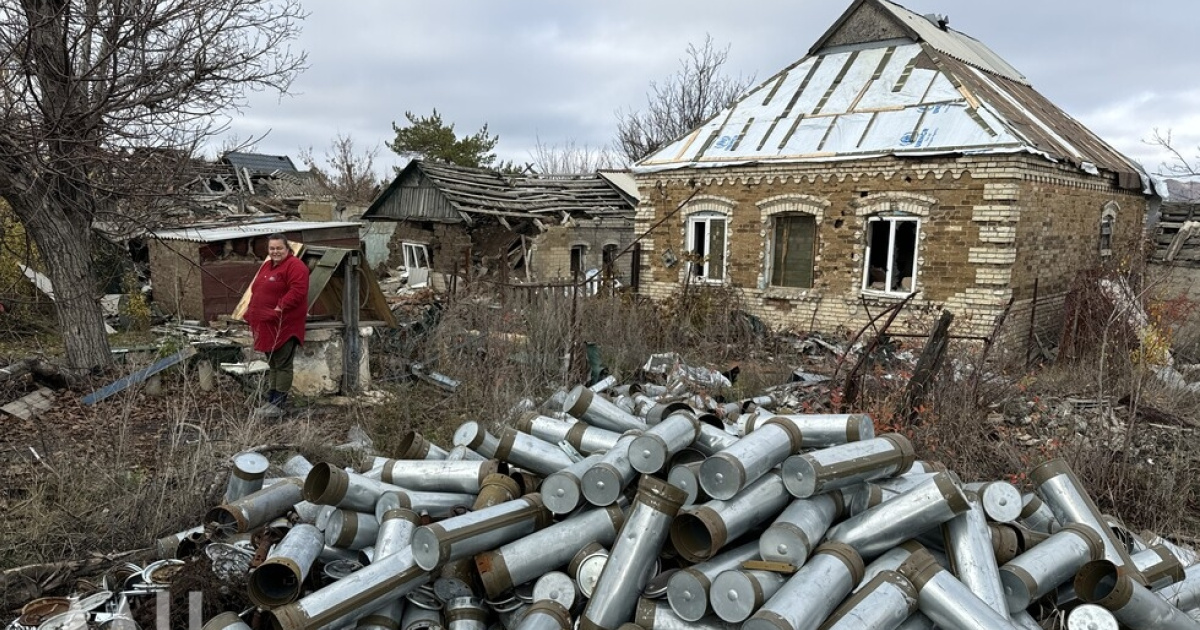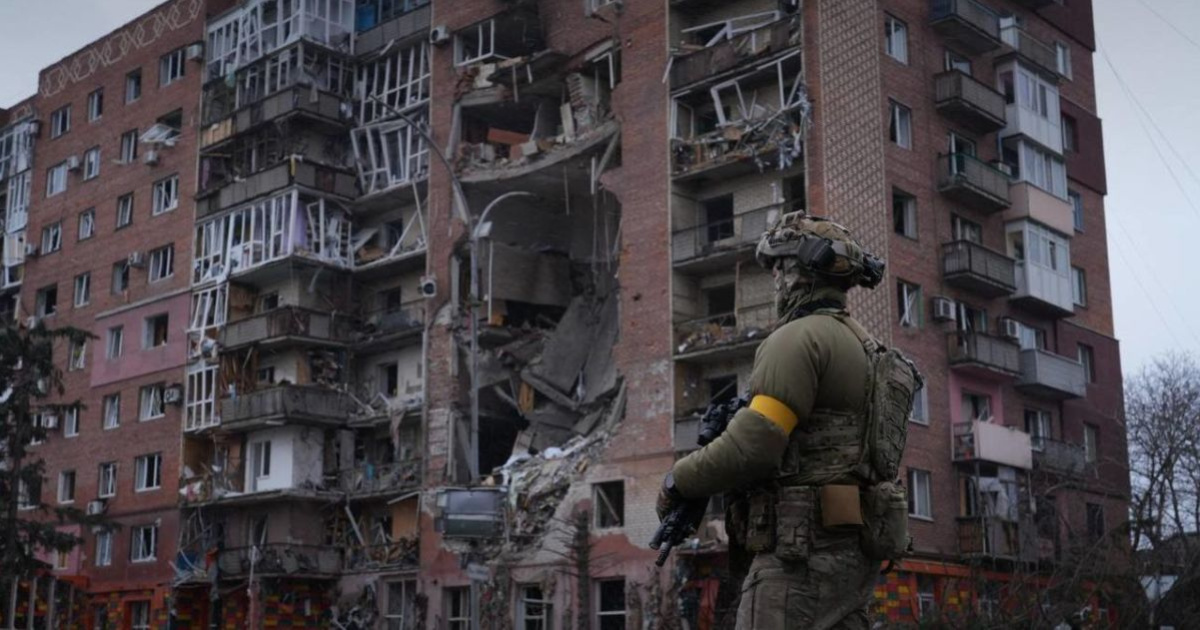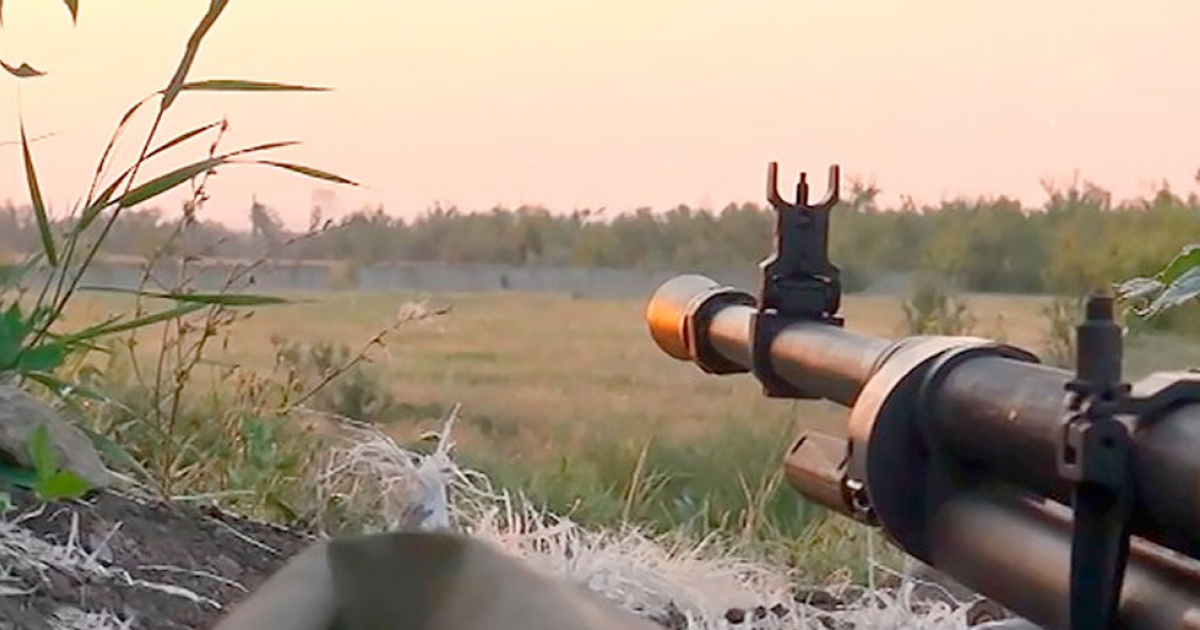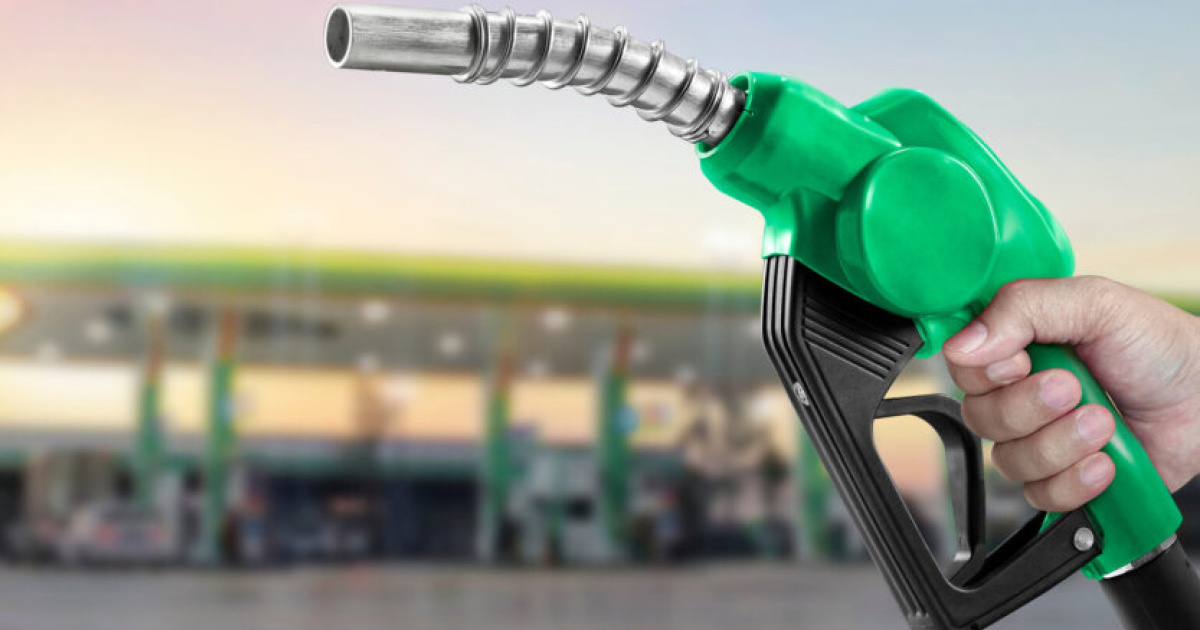
August 2025 turned out to be especially difficult for the russian fuel market. After a series of strikes on oil refineries, russia lost a significant part of its refining capacity (about 1–1.5 million barrels per day). Exchange prices for AI-95 gasoline reached 80.51 thousand rubles per ton, setting a historic maximum. Within one day, the price rose by another 0.44%, while AI-92 gasoline increased by 1.58% — to 70.484 thousand rubles per ton. Gasoline prices have risen by almost 47% since the beginning of the year, despite the export ban that the government imposed for August and extended into September.
In many regions of russia, particularly in Primorsky Krai, Zabaykalsky Krai, and the Far East, fuel disappeared from gas stations, and drivers abandoned trucks on highways due to the lack of gasoline. Occupied Crimea became a symbol of this collapse.
"It seems that as of today, Crimea doesn’t just have the highest fuel prices, but record-breaking ones. And this is about official gas station prices, while resellers add another 50% to that price tag. Now the price per liter is more than 70 rubles. In moscow and other cities — it’s cheaper, when has that ever happened? Our products are already more expensive than in russian cities, and now we’re record holders for fuel prices, and there’s barely any fuel at all", — a resident of Simferopol, Mikhail, told OstroV.
The scale of the shortage
In mid-August, in occupied Sevastopol, AI-95 gasoline completely disappeared from gas stations. Where it was sold without coupons, the price almost reached 70 rubles/liter. In other cities of the peninsula, gasoline was issued only with special vouchers, which were given to enterprises and organizations. The "Ministry of Fuel and Energy of Crimea" admitted that some gas stations had no AI-95, but claimed that the shortage was supposedly insignificant. However, locals experienced serious disruptions: fuel could only be purchased at certain gas stations, where long lines formed.
At some point, the "head of Crimea" Sergey Aksyonov nevertheless acknowledged the problem.
"Unfortunately, production volumes at three plants in southern russia have significantly decreased for objective reasons… A significant part of the fuel is delivered to Crimea by road transport. I ask both Crimeans and visitors of the peninsula to understand these temporary difficulties", — he said on the air of the "Crimea 24" TV channel.
According to him, a significant part of the fuel is delivered by road, and therefore, after the end of the "special operation", logistics will return to normal.
Aksyonov promised to solve the problem within a month, although he stated that the situation would fully normalize only with the arrival of large vertically integrated companies in Crimea.
The "prime minister of Crimea" Yuriy Gotsanyuk reported on Telegram that the government had agreed with traders to freeze retail prices, but even he admitted that wholesale prices had risen over the year by 11,000 rubles for AI-92 and by 15,000 rubles for AI-95, which increases the cost of delivering fuel to the peninsula. The annual consumption growth during the tourist season reached 1,100 tons per day compared to 700 tons last year. Under such demand and limited supply, even minor disruptions turned into a large-scale shortage.
Prices and regulation
In August, the retail price of AI-95 in Crimea hovered around 70 rubles/liter. Those gas stations that had fuel sold it with enterprise vouchers. On the black market, a liter of AI-95 cost 100 rubles, that is, one and a half times more expensive. Fuel canisters also went up in price: old 20-liter canisters were sold for 900–1000 rubles, while new ones cost up to 2,500 rubles.
Despite the full export ban introduced at the end of July, AI-95 gasoline prices continued to hit records, and the shortage at gas stations worsened. This indicates that the administrative export restriction and price freeze had the opposite effect: traders did not want to work at a loss and stopped supplying fuel. Automatically, a voucher and speculative market emerged, which Crimean residents wrote about on social media.
Occupation officials tried to shift the blame onto external factors. The "Ministry of Fuel and Energy" explained that the temporary difficulties were caused by weather conditions at the Kerch crossing. Due to strong winds, the ferry operated on a reduced schedule, and fuel trucks failed to deliver petroleum products. The same argument was repeated in the news.
The Sevastopol "governor" Mikhail Razvozhayev promised on Telegram that the AI-95 shortage would be eliminated in the coming days, and by evening fuel would appear at gas stations. But the crisis has still not been resolved.
"Fuel appears a little, but far from at all stations. If we are talking about Sevastopol, then it’s about several large stations in the city center and at the outskirts. In residential areas, popular grades are absent, but fuel canisters can be bought at a 'special price'. If AI-95 appears somewhere, it’s either sold in limited amounts per car or runs out quickly. In small towns and villages, it’s much worse — fuel almost doesn’t reach them now", — a local resident of Sevastopol told OstroV on August 25.
Although official websites tried to reassure people, stories about endless lines, vouchers, and speculators spread across social networks, Telegram channels, and local forums. Sergey, a 42-year-old taxi driver from Simferopol, says his business has almost stopped.
"I have to stand in line at a gas station for three hours, and when I finally reach the pump, they say: fuel is out. I tried to buy a voucher in a Telegram channel, but it’s all speculation there. In the end, I have to buy gasoline at the rate of 95 rubles", — he wrote on social media.
An entrepreneur from Bakhchisarai, the owner of a small bakery, described how the shortage almost paralyzed his business.
"I own a small bakery in Bakhchisarai. Every morning we bake bread and deliver it to stores in nearby villages. But the past week all of this has been under threat: fuel is simply impossible to find. I arrive at the station at six in the morning, and the line already stretches for a kilometer. People spend the night in their cars because they’re afraid to miss a delivery. Once, when I had almost reached the pump, the attendant announced that gasoline was now issued only with vouchers… The authorities talk about 'temporary difficulties', about the weather at the crossing, but I see how on the black market, side by side with the police, fuel is sold in canisters. We, entrepreneurs, are working on the edge, and there’s no guarantee we’ll even be able to leave tomorrow", — he shared on Telegram.
Causes of the fuel crisis
Experts agree that the root cause of the shortage was the mass attacks of Ukrainian drones on russian oil refineries. According to Reuters, within three weeks of August, Ukrainian drones attacked seven facilities, including Rosneft plants in Ryazan, Samara, and Saratov, as well as the Lukoil refinery in Volgograd. After the strike in Volgograd, the plant stopped receiving oil; the fire was extinguished for 19 hours, and the facility, which processed 14.8 million tons per year, shut down.
The Saratov and Novokuibyshevsk refineries stopped producing light oil products, while the Ryazan plant reduced production by half. Analysts estimate that in just one week, the strikes disabled 1.5 million barrels per day of refining capacity.
"The attacks on oil refineries occurred at a time when seasonal demand for gasoline from tourists and farmers in russia had peaked. Russia tightened the gasoline export ban in July to deal with the surge in domestic demand even before the attacks", — Reuters writes.
According to the agency’s calculations, Ukrainian attacks disrupted the operation of at least 17% of russia’s refining capacity.
Logistics is the second factor. Crimea has always had limited connections with mainland russia, and after the destruction of the Crimean Bridge and limited ferry service, fuel tankers take a longer route through the ferry crossing. It was precisely the weather conditions at the crossing that the “press service of the Crimean Ministry of Fuel and Energy” named as the main reason for the shortage. Because of strong winds, the ferry often did not run, and the delivered fuel still had to undergo technological preparation before being sold. In August 2025, the tourist season increased the load: 700–1100 tons of fuel were brought into Crimea per day, but that was not enough.
Apart from the bridge, problems also arose due to restrictions on internet communication introduced by the occupation authorities after strikes by Ukrainian drones. Users complained that during the crisis they could not post information about fuel availability at gas stations, which complicated coordination and fueled panic and discontent.
Another reason for the shortage is state regulation of prices and the export ban. The russian government tried to contain price growth by freezing them and banned gasoline exports at the end of July. But even russian economists warned that state interference would only worsen the shortage.
The price freeze created a voucher system, where fuel was sold only with enterprise coupons. This limited access for ordinary drivers and contributed to the emergence of a black market, as evidenced by numerous publications: coupons were resold on Telegram at inflated prices. In such conditions, kilometer-long lines formed at gas stations, and many gas stations simply closed to avoid working at a loss.
In addition, sanctions and the lack of spare parts have an impact. In the analysis of some russian media, it was noted that russian companies were forced to purchase expensive imported equipment for refinery repairs, but due to sanctions this was practically impossible, which increases production costs. Low global oil prices and the need to give discounts to main buyers (China, India) also worsen the financial condition of oil companies.
Not only Crimea
The fuel crisis was not limited to Crimea. In the occupied areas of the Donetsk and Luhansk oblasts, there is also a shortage of gasoline, especially AI-95, though on a smaller scale. Local residents periodically complain about empty gas stations, high prices, and the inability to refuel their cars.
The so-called “Ministry of coal and energy of the DNR” admitted that wholesale gasoline prices have risen significantly since the beginning of the year. Thus, wholesale prices for AI-92 gasoline increased by 13.4 rubles per liter, and for AI-95 — by 20.8 rubles.
“This is a record growth since 2015”, — the “ministry” stated.
The reasons for the rise in gasoline prices, local “officials” said, were “the international geopolitical situation, which causes fluctuations in global energy markets”, logistics and transportation costs, as well as increased demand for fuel “due to active agricultural work and construction projects”.
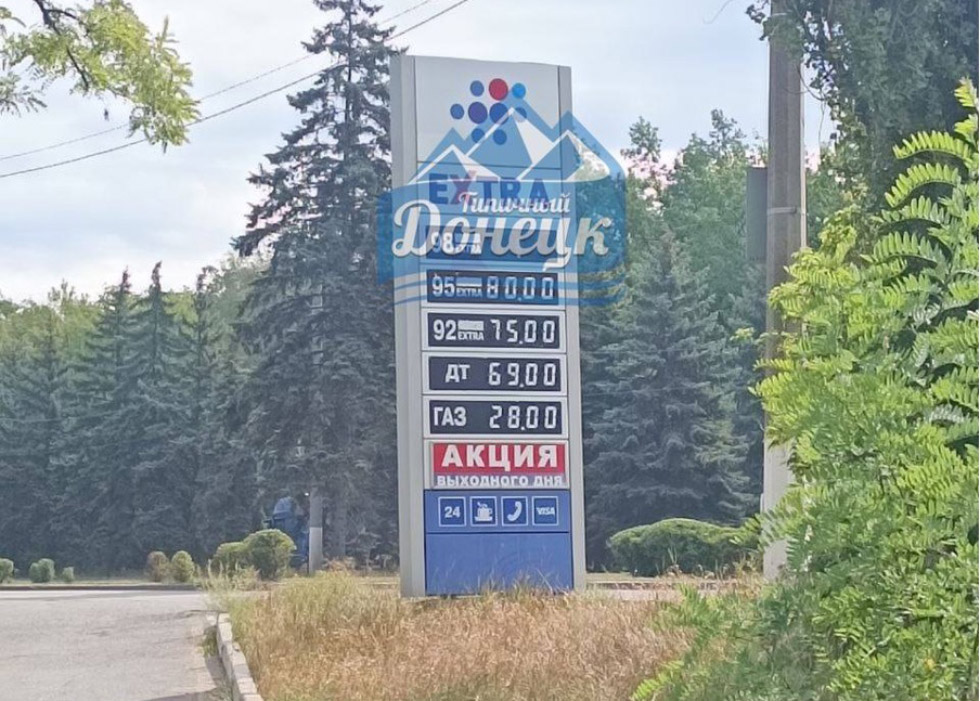
In the Luhansk oblast, according to occupational media, some gas stations did not sell AI-95 for a long time. The “deputy minister of fuel of the LNR”, Andrey Eliseev, reported that the interruptions “are temporary”. According to him, sales restrictions are related to logistics, and the “authorities” are taking measures to restore supplies. But similar statements were made in Crimea, and it is obvious that the problem is systemic.
The “governor of the Zaporizhzhia oblast”, Yevgeny Balitsky, also reported problems with gasoline. According to him, this is due to peak fuel consumption in the summer season and repairs at oil refineries in southern russia. Balitsky also emphasized that in the region the situation is complicated by logistics problems — fuel depots are under threat of Ukrainian Armed Forces strikes. He promised to fully resolve the problems only in the first ten days of September.
The russian deputy prime minister Alexander Novak even instructed the Federal Antimonopoly Service and the Ministry of Energy to analyze deviations in fuel prices in the Donetsk, Luhansk, Zaporizhzhia, and Kherson oblasts. This indicates that fuel problems have also spread to these regions, although they are not as public there yet.
In russia, Primorsky Krai, Zabaykalsky Krai, and the Kuril Islands suffered the most from the shortage. In the Far East, AI-95 gasoline disappeared in some places, and in Vladivostok and Chita sales limits were introduced: in Chita — no more than 10 liters per person. The monitoring group Iterbin.ua reported a complete absence of AI-92 and AI-95 in Vladivostok. Residents of Krasnokamensk (Zabaykalsky Krai) could not buy gasoline, so it was supplied only to enterprises.
Federal authorities tried to respond. Deputy Prime Minister Novak supported extending the ban on gasoline exports for the entire month of September for producers and until the end of October, and the Antimonopoly Service announced that it would increase the minimum volumes of gasoline sales on the exchange from 15% to 17%. However, experts doubt the effectiveness of these measures, because administrative interference only worsens the shortage.
Consequences for Crimea’s economy and people’s lives
The fuel crisis affected all spheres of life in occupied Crimea. The tourist season was hit hard: due to the shortage of gasoline, endless queues at gas stations, and the fear of getting “stuck” on the peninsula, vacationers increasingly leave Crimea early. Add to this the periodic shutdown of mobile internet and communications, logistics problems, drone attacks, and high prices.
On social media, people are massively sharing stories of many-hour-long queues on the Kerch bridge and near the ferry crossing. Problems also arose in transport and logistics: taxi drivers are raising prices, public transport drivers are hunting for diesel, and commercial transportation costs skyrocketed. Some companies even switched to more expensive gasoline to ensure uninterrupted operation, which further increased their expenses.
Due to the fuel shortage, customers began leaving small cafes, hotels, and holiday resorts. Businesses were forced to buy fuel on the black market and, accordingly, raise the prices of their services.
The crisis also created serious social tension. Many residents felt like they were “back in the USSR”: people recalled the voucher system, shortages in stores, and queues.
The fuel crisis in occupied Crimea exposed the structural problems of russian energy policy. The August strikes by Ukrainian drones only catalyzed what had been ignored for years: the lack of strategic reserves, the monopolistic nature of the market, the absence of competition, and the peninsula’s logistical dependence on the narrow “shoulder” through the Kerch Strait. When these factors coincide with seasonal consumption peaks and administrative interference, a perfect storm emerges — vouchers, queues, and the black market.
For residents and tourists, Crimea turned into a territory of restrictions. The stories of locals show that the fuel crisis is not only about numbers, but about the daily struggle for freedom of movement and a normal vacation. The authorities’ ability to respond to such crises remains in doubt: promises to “eliminate the shortage within a week” are made every time warehouse reserves run out…
“So maybe it’s already time to negotiate and end the ‘special military operation’? I don’t know where all this will lead us next. Every month brings more restrictions and inconveniences: first planes were banned, then the bridge was attacked, then drones and missiles are flying, plus sanctions, inflation, and now a fuel shortage. What’s next? We need peace and stability. Although, my neighbor says everything is fine — her son recently joined the ‘special military operation’, He was paid good money and they closed their loan, bought a car. She says they can fight some more, because she’s thinking about renovations”, - said Raisa E., a resident of occupied Sevastopol.
By Andrii Andrieiev, journalist for OstroV



